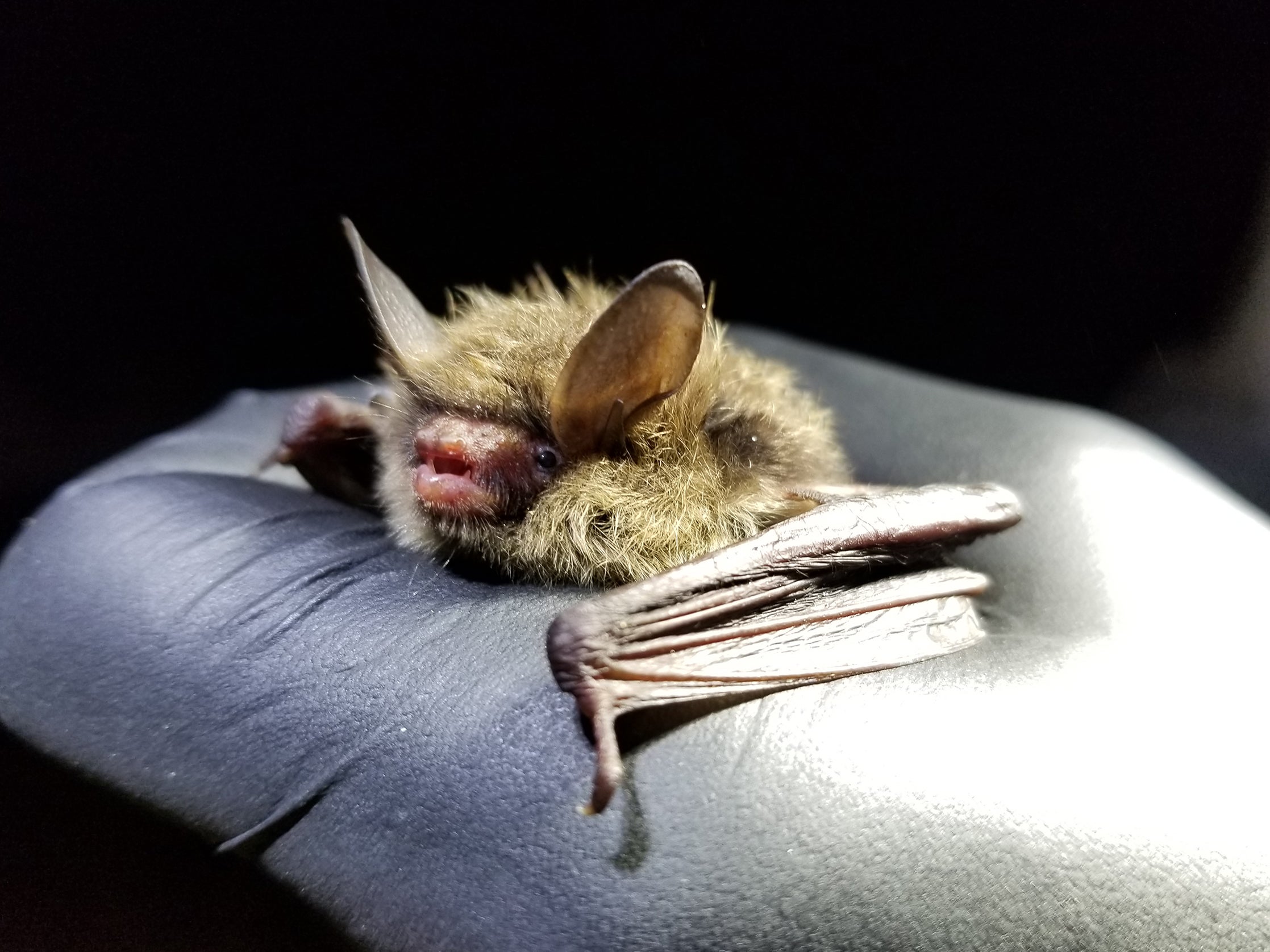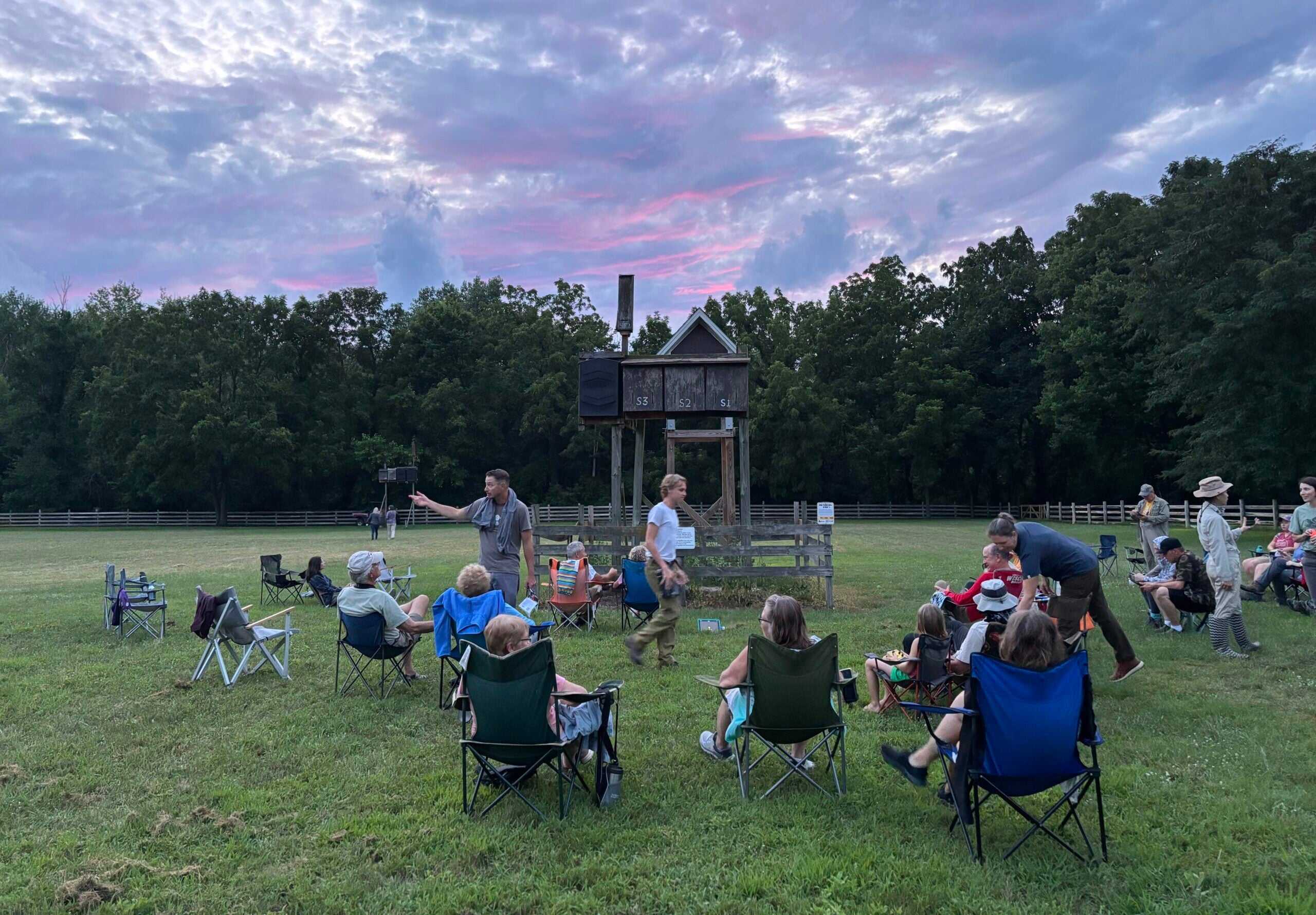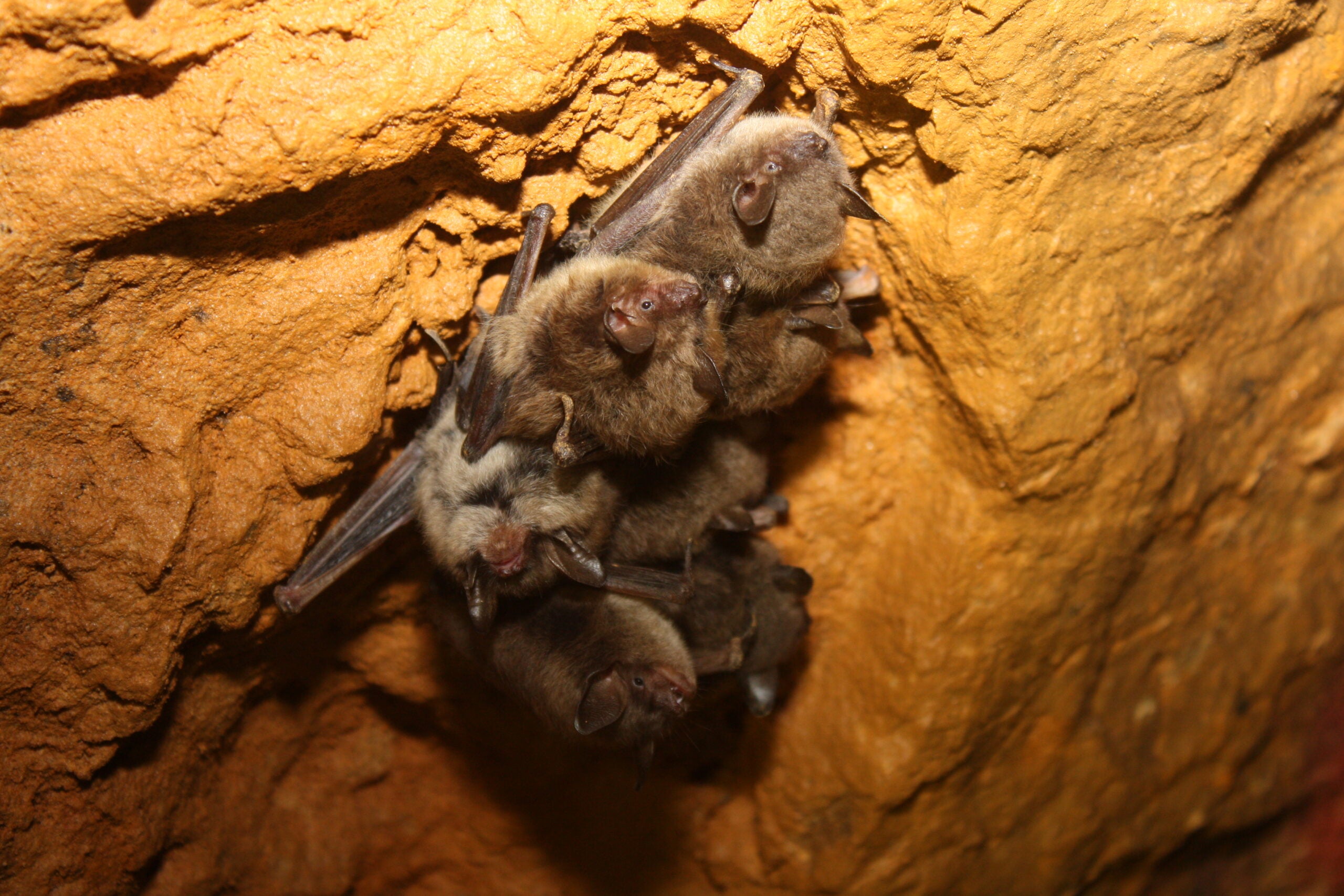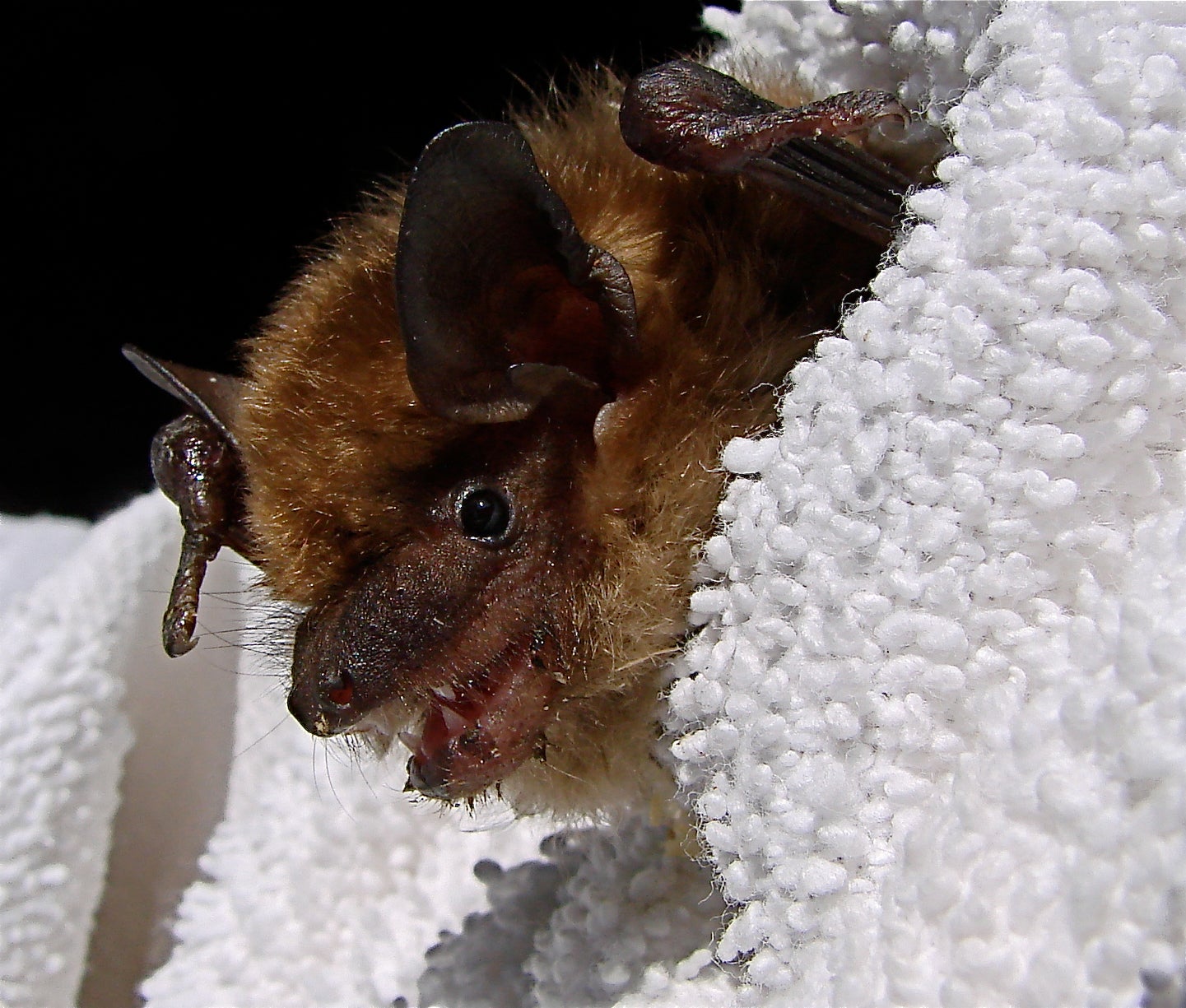A little over a decade ago when a monitoring team from the Wisconsin Department of Natural Resources went searching for hibernation spots, staff members found hundreds of northern long-eared bats sleeping away their winters at more than 60 sites around the state.
Then white-nose syndrome made its way to Wisconsin, and what researchers found quickly began to change.
“Just this last winter, the current hibernation season, they saw three northern long-eared bats at only two sites. So, they are almost gone, unfortunately, from the state of Wisconsin,” said Owen Boyle, the DNR’s species management section manager.
News with a little more humanity
WPR’s “Wisconsin Today” newsletter keeps you connected to the state you love without feeling overwhelmed. No paywall. No agenda. No corporate filter.
White-nose syndrome was first discovered in New York in 2006. The fungal disease looks like white fuzz on bats’ skin. And while the disease itself doesn’t kill them, it wakes the bats up while they’re hibernating in caves or abandoned mines and has them burning through fat stores until they eventually starve.
It was found in Wisconsin in 2014.
Since its discovery in North America, fungal disease has decimated the northern long-eared bat with population declines of 97 percent or more documented across two Canadian provinces and 27 states, including Wisconsin.
That led the Biden administration to list the bats as an endangered species in November in the hope of preventing them from disappearing altogether.
The listing seeks to provide greater protection to surviving bats in wooded areas where bats roost during the summer and sites where they hibernate.
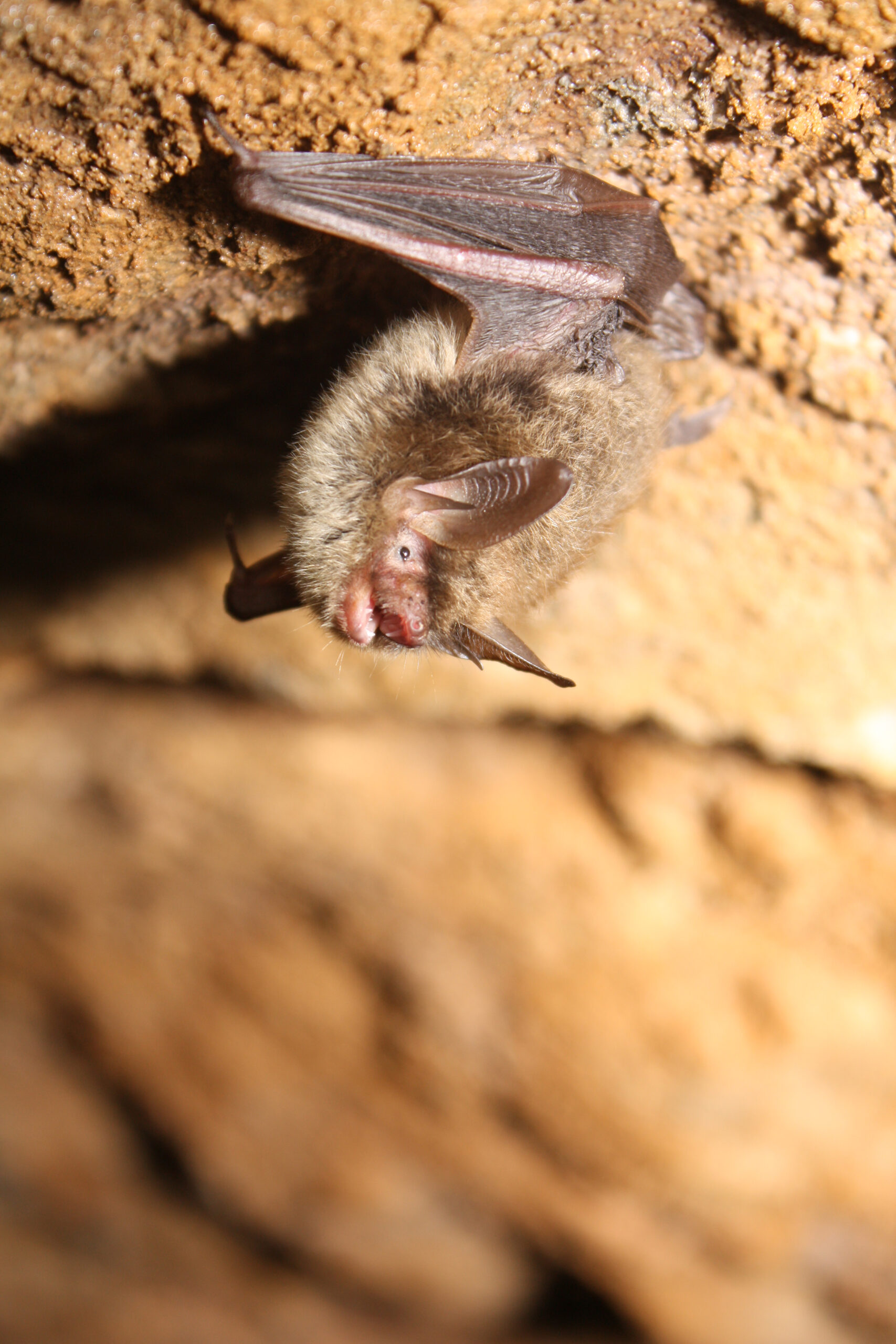
Photo courtesy of Wisconsin DNR
Wisconsin listed the northern long-eared bat as a state threatened species in 2011, and the U.S. Fish and Wildlife Service listed the species as threatened in 2015. The bats are smaller than the length of a hand, ranging about 3 to 4 inches. They emerge at night to feed on insects like moths and flies, providing natural pest control with widespread benefits.
One study estimated the loss of bats due to white-nose syndrome and wind developments could cost agriculture more than $3.7 billion each year.
“They provide that so-called ecological service for free pest control,” Boyle said. “Without bats, we’re going to have to do a lot more to control the pests ourselves.”
With few remaining, Boyle said it’s rare that projects or activities would affect the species. Even so, the agency has been working with partners in Michigan and Minnesota on a habitat conservation plan that’s awaiting final approval from the U.S. Fish and Wildlife Service. That’s expected to be finalized in early 2023.
Under it, the federal agency will allow a permit for certain activities that may result in unintentional kills of the bats, which would be issued by states. The permits would require conservation measures to limit impacts like seasonal buffer zones around bat roosts and entrances to sites where they’re known to hibernate in the winter.
Those zones would extend a quarter mile or more to prevent activities like logging that could affect the bats. The draft plan strikes a balance between conservation and forest management, according to Henry Schienebeck, executive director of the Great Lakes Timber Professionals Association.
“We’re very concerned about conservation like everybody else,” Schienebeck said. “We’ve been in favor of the development of the Habitat Conservation Plan to make sure that we’re doing the best we can do to make sure that they do have an environment, but yet keep in mind that white-nose syndrome is really what’s causing their demise.”
Meanwhile, researchers with the U.S. Geological Survey and University of Wisconsin-Madison have been studying vaccines to treat bats. They developed the first vaccine ever used in wild bats and conducted initial trials with little brown bats several years ago that showed improved survival. In 2019, researchers received federal authorization to begin field trials in Wisconsin that have since expanded to other states, including Idaho, Washington, and Texas.
“It’s a pretty novel thing that we’re actually getting positive outcomes with our white-nose syndrome vaccine,” Tonie Rocke, a research scientist with the USGS National Wildlife Health Center in Madison, said.
“That being said, it doesn’t completely eliminate the disease; they still can get white-nose, but what we have seen is that the fungal loads on their wings are lower in vaccinated bats,” Rocke continued.
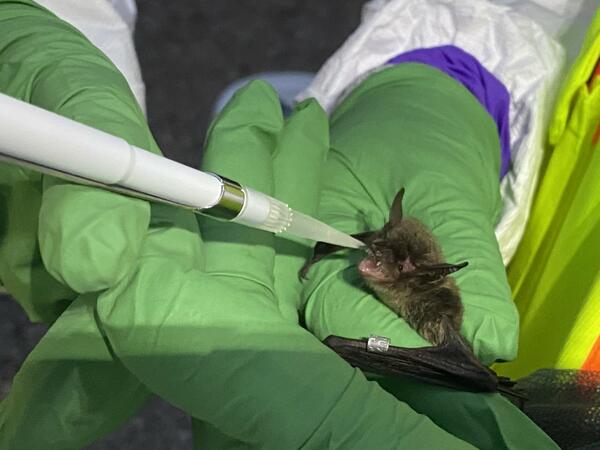
Photo courtesy of the USGS National Wildlife Health Center in Madison
If they lower fungal amounts on bats, the hope is that they will be better able to survive the disease and get through hibernation. The vaccines are currently delivered orally into bats’ mouths by using a pipette or dropper. Rocke said researchers are working on methods to deliver it through a spray that can be applied to bats, which would then ingest the vaccine by grooming it off themselves.
So far, researchers have not yet tested the vaccine on northern long-eared bats because it’s difficult to capture large numbers of them during hibernation.
“But, certainly, it would be possible if we could find locations where we can catch a fair number of them and deliver it to them orally like we’re doing the little brown bats,” Rocke said.
Researchers need to finish field studies to confirm whether the vaccine can improve survival at several locations before it’s applied on a larger scale as a management strategy to reduce the effects of white-nose syndrome. In the meantime, the listing of the northern long-eared bat as an endangered species officially takes effect on Jan. 30 next year.
Wisconsin Public Radio, © Copyright 2026, Board of Regents of the University of Wisconsin System and Wisconsin Educational Communications Board.
